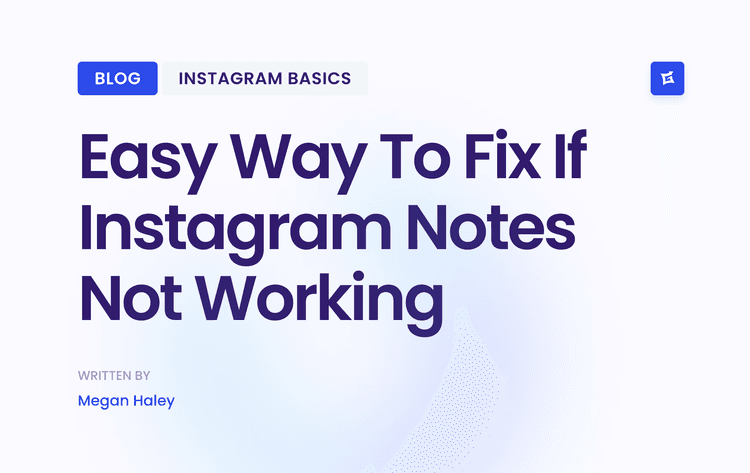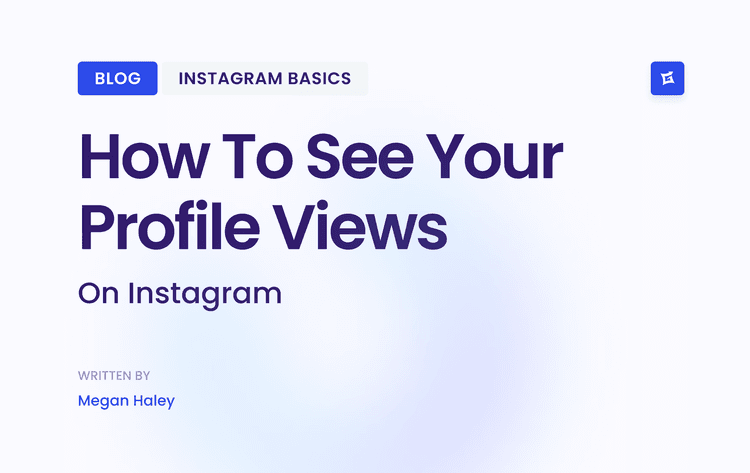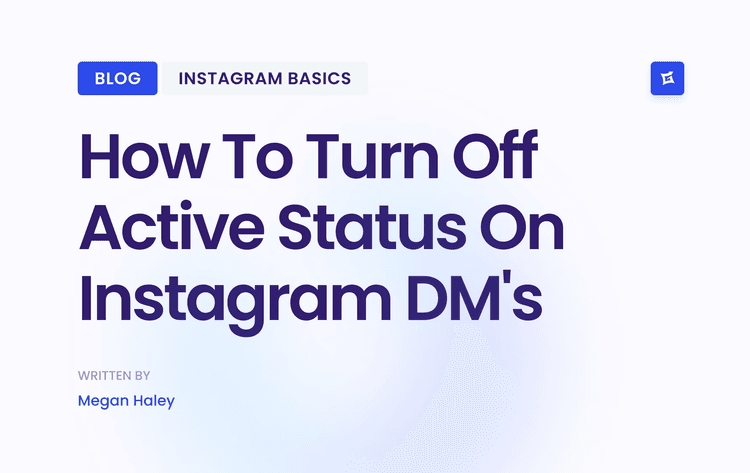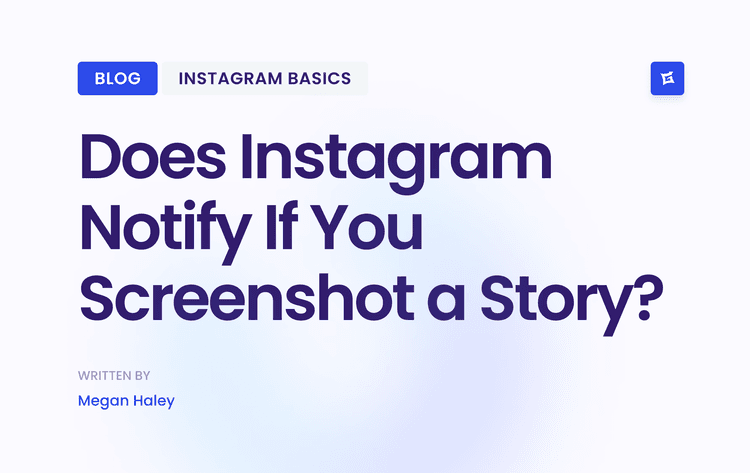Unlocking Instagram Success in 2025: Metrics That Matter
1. Engagement Rate
Engagement rate is arguably the most crucial Instagram performance metric. It measures the percentage of your followers who actively interact with your content. These interactions include likes, comments, shares, and saves. It's calculated by dividing the total number of engagements on a post by your total follower count, then multiplying by 100. This metric is considered the gold standard for Instagram performance because it directly reflects how well your content resonates with your audience and fosters community. A high engagement rate signals that your content is captivating, relevant, and encourages active participation.
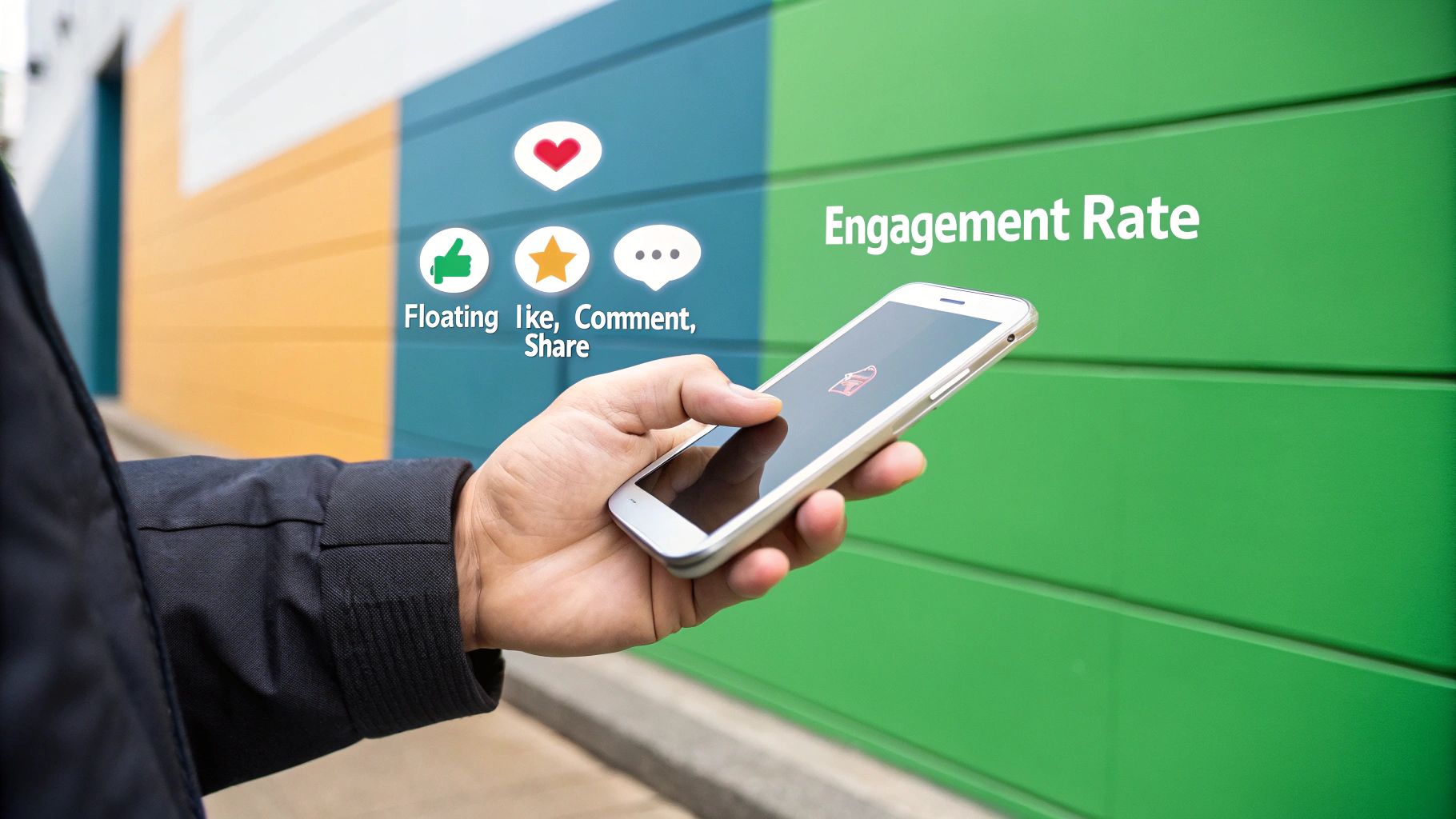
This metric is at the top of the list because it provides a more nuanced understanding of your Instagram performance than simply looking at vanity metrics like follower count. While a large following might seem impressive, a low engagement rate suggests that many followers are inactive or uninterested in your content. Engagement rate cuts through the noise and highlights the true impact of your content strategy.
Here's a breakdown of its key features and benefits:
Combines Multiple Interaction Types: Engagement rate consolidates various forms of interaction (likes, comments, shares, and saves) into a single, easily digestible metric.
Per-Post and Average Calculation: You can calculate the engagement rate for individual posts to understand their specific performance, or calculate an average engagement rate across all your posts to get a holistic view of your account's performance.
Benchmarking: Typical engagement rates range from 1-5% for regular accounts, with 3% considered good. However, these benchmarks can vary by industry and niche. Micro-influencers (10 K- 50 K followers) often achieve engagement rates of 8% or higher.
Timeframe Flexibility: Engagement rate can be tracked daily, weekly, or monthly, allowing you to analyze trends and the impact of specific campaigns.
Pros:
Clear Indication of Content Resonance: Provides a clear picture of how well your content is connecting with your target audience.
More Valuable Than Follower Counts: Offers a more meaningful measure of influence than follower count alone.
Content Optimization Insights: Helps identify high-performing content formats and topics that resonate most with your audience.
Influencer Marketing Evaluation: Used by brands to assess the authenticity and engagement levels of potential influencer partners.
Cons:
Potential for Artificial Inflation: Engagement pods and purchased interactions can artificially inflate engagement rates.
Natural Decline with Growth: Engagement rate tends to decrease as follower count increases.
Limited Scope: Doesn't account for impression quality or conversion actions beyond engagement.
Algorithm Dependency: Changes to the Instagram algorithm can impact engagement patterns.
Examples:
National Geographic (@natgeo) consistently maintains an engagement rate of 4-7% despite having over 250 million followers.
Many micro-influencers (10 K- 50 K followers) achieve engagement rates of 8% or more due to their niche focus and strong community building.
Fashion brand Glossier leverages engagement rate to identify user-generated content for reposting, amplifying authentic voices, and building brand loyalty.
Tips for Improving Engagement Rate:
Track Engagement by Content Type: Experiment with different content formats (images, videos, carousels, Reels, Stories) and track their engagement rates to identify winning strategies.
Benchmark Against Competitors: Analyze the engagement rates of competitors in your niche to understand industry benchmarks and identify areas for improvement.
Prioritize Quality over Quantity: Focus on creating high-quality, engaging content that provides value to your audience rather than posting frequently with less impactful content.
Boost Interaction Through Comments: Respond to comments and engage with your followers to foster community and encourage further interaction.
Utilize Instagram Insights: Leverage Instagram's built-in analytics tools to track engagement metrics and gain deeper insights into your audience's behavior.
Popularized By:
Engagement rate as a key metric has been popularized by various platforms and agencies, including influencer marketing platforms like HypeAuditor and Influencer Marketing Hub, social media management tools such as Hootsuite and Sprout Social, and digital marketing agencies emphasizing ROI measurements.
2. Reach
Reach is a fundamental Instagram performance metric that measures the total number of unique accounts exposed to your content. Unlike impressions, which count multiple views by the same account, reach focuses on how many individual users have seen your posts, stories, reels, or IGTV videos. This metric provides valuable insights into the breadth of your content distribution and its potential to attract new followers beyond your existing audience. Understanding and optimizing for reach is crucial for expanding your influence and achieving significant organic growth on Instagram.

This metric deserves a prominent place in any Instagram performance analysis because it directly reflects the discoverability of your content. A higher reach suggests that your content is being seen by a wider audience, indicating potential for increased brand awareness, follower growth, and ultimately, business success. Reach data is accessible through Instagram Insights for business accounts, and it's further broken down into follower reach (views from your existing followers) and non-follower reach (views from accounts that don't follow you). This distinction helps pinpoint whether your content resonates with your current audience and its effectiveness in attracting new viewers.
Features and Benefits:
Accessible via Instagram Insights: Easily track and analyze your reach data.
Segmented Reach Data: Differentiate between follower and non-follower reach to understand audience engagement and growth potential.
Content-Specific Measurement: Analyze the reach of individual posts, stories, reels, and IGTV videos to identify high-performing content formats.
Algorithm Impact Visibility: Gauge how algorithm changes and content visibility affect your reach.
Pros:
Evaluates Content Discoverability: A high reach indicates that your content is effectively reaching a wider audience.
Indicates Algorithm Favorability: Increased reach suggests that the Instagram algorithm is prioritizing your content.
Shows Potential for Audience Growth: Expanding your reach opens doors to attract new followers.
Valuable for Brand Awareness Campaigns: Reach is a key metric for measuring the success of brand awareness initiatives.
Cons:
Doesn't Measure Interaction Quality: While reach indicates exposure, it doesn't reflect the quality of viewer engagement (likes, comments, shares).
Subject to Fluctuations: Reach can vary significantly between posts due to algorithmic changes and user behavior.
Impacted by Hashtag Strategy: Ineffective hashtag usage can limit content discoverability and negatively impact reach.
Difficult to Benchmark Competitively: Competitor reach data is generally not publicly available, making direct comparisons challenging.
Examples of Successful Implementation:
Gymshark: Increased reach by over 50% by optimizing posting times to coincide with peak user activity.
Chipotle: The #GuacDance challenge reached over 250 million users through strategic hashtag implementation.
Travel Influencer @muradosmann: Boosted reach by 40% by cross-promoting content across stories and feed.
Actionable Tips for Maximizing Reach:
Optimize Posting Times: Use Instagram Insights to identify the best times to post for your target audience.
Strategic Hashtag Mix: Implement a diverse mix of trending, niche, and branded hashtags to enhance discoverability.
Create Shareable Content: Encourage audience participation and sharing to expand your reach.
Utilize All Content Formats: Leverage feed posts, stories, reels, and IGTV to maximize your reach across different platforms.
Analyze High-Performing Content: Identify content that achieves the highest reach and create similar content to replicate success.
When and Why to Use Reach Analysis:
Reach analysis should be an integral part of your ongoing Instagram strategy. Monitor reach regularly to track content performance, understand audience growth trends, and adapt your content strategy accordingly. This metric is particularly important for:
Assessing Content Performance: Identify which content resonates with your audience and adjust your content calendar accordingly.
Tracking Campaign Effectiveness: Measure the reach of sponsored posts and organic content related to specific campaigns.
Optimizing Hashtag Strategy: Evaluate the impact of your hashtag strategy on reach and adjust your approach as needed.
Understanding Audience Growth: Monitor non-follower reach to gauge your ability to attract new audiences.
Popularized By:
Reach as a key performance indicator has been popularized by Instagram's native analytics platform, as well as digital marketing experts like Neil Patel and social media strategists like Jenn Herman.
3. Follower Growth Rate
Follower Growth Rate is a crucial Instagram performance metric that measures how quickly your account gains (or loses) followers over a specific period, typically a month or a quarter. It's calculated as a percentage by dividing the number of new followers gained by your total followers and multiplying by 100. This metric provides invaluable insights into the overall health of your account, the effectiveness of your content strategy, and the potential for expanding your reach over time. It's a far more meaningful metric than looking at raw follower counts, as it reveals trends and momentum.
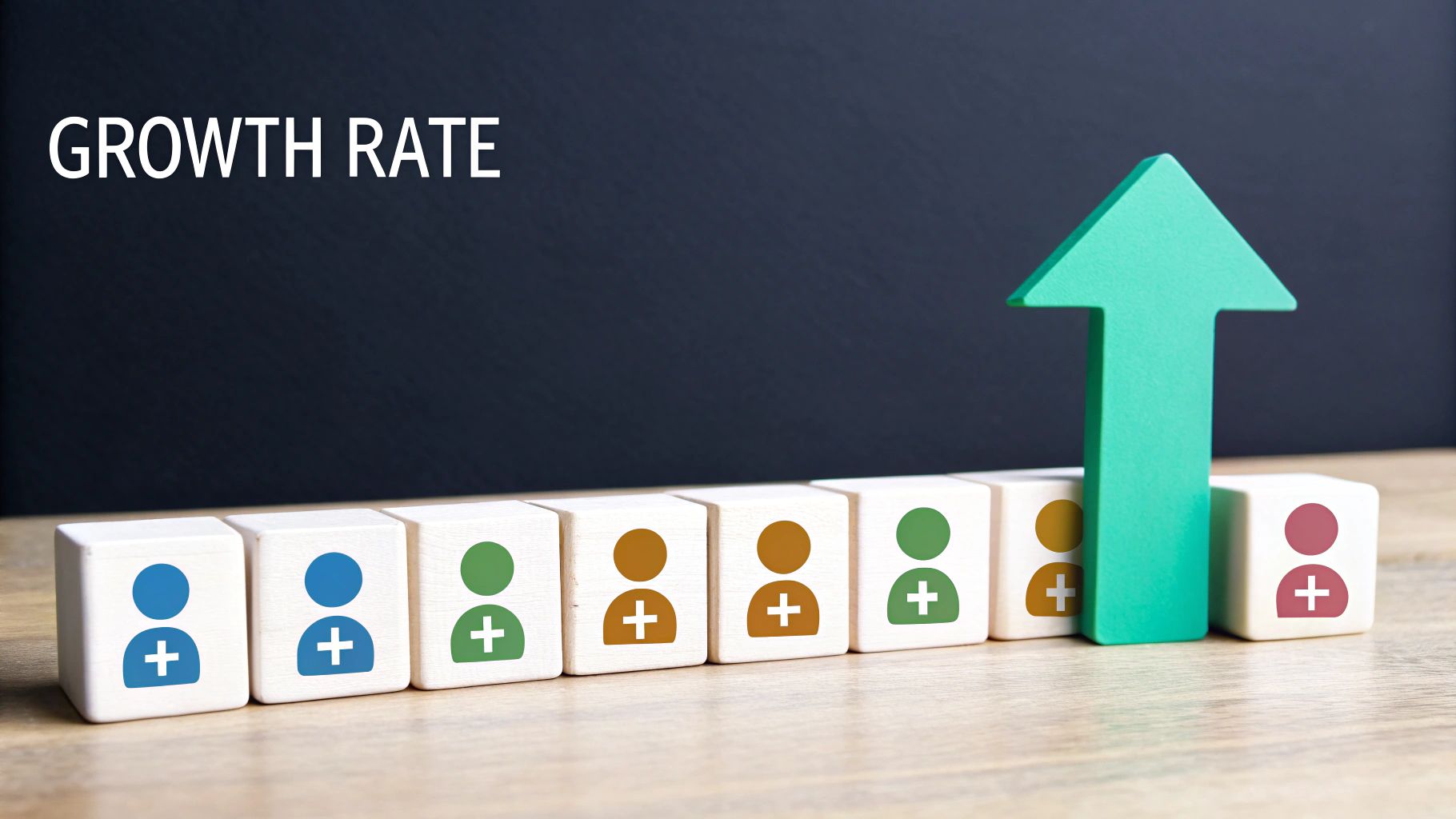
A healthy Instagram account typically experiences a monthly follower growth rate between 1% and 5%. Higher percentages can indicate viral moments or highly successful campaigns. Conversely, a negative growth rate signals potential issues with content, algorithm changes, or shifts in audience interest. Tracking this metric allows you to identify these trends and adapt your strategy accordingly. For example, a sudden drop in follower growth rate could indicate a problem with recent content or a change in the Instagram algorithm. A sustained period of positive growth, on the other hand, suggests that your content strategy is resonating with your target audience.
Features and Benefits:
Trend Analysis: Reveals growth patterns over time, providing a more nuanced picture than raw follower counts.
Comparative Measurement: Easily benchmark your growth against industry averages and competitors.
Predictive Power: Helps project future engagement and reach potential.
Goal Setting: Facilitates the creation of realistic, data-driven growth objectives.
Early Warning System: Alerts you to potential issues, such as declining reach or content that isn't resonating.
Pros:
Content Effectiveness Indicator: Provides insights into audience reception of your content strategy.
Algorithm Health Check: Reveals potential issues with reach and visibility.
Future Growth Prediction: Aids in forecasting future engagement potential.
Benchmarking: Allows comparison with industry standards and competitors.
Goal Setting: Supports the development of realistic and achievable growth targets.
Cons:
Susceptibility to Manipulation: Can be artificially inflated through purchased followers.
Ignores Follower Quality: Doesn't account for the engagement level or authenticity of followers.
Natural Growth Plateaus: Growth rates tend to stabilize as accounts mature.
External Influences: Affected by external factors like seasonal trends and current events.
Viral Fluctuations: Can experience dramatic spikes and dips during viral periods, making long-term trend analysis essential.
Examples:
TikTok star Charli D'Amelio saw her Instagram following explode with monthly growth rates exceeding 25% during her initial rise to fame.
Food account @cookingwithayeh maintained consistent monthly growth of 7-8% through consistently high-quality recipe content.
Peloton experienced a 15% surge in follower growth during the initial months of the pandemic (March-June 2020).
Tips for Optimizing Follower Growth Rate:
Realistic Benchmarks: Set achievable growth goals based on your account size, niche, and industry averages.
Monitor Unfollows: Track unfollows to identify potential content issues or audience dissatisfaction.
Analyze Spikes: Examine periods of rapid growth to pinpoint successful content types and campaigns.
Strategic Contests: Utilize follower growth contests sparingly to avoid attracting low-quality followers.
Prioritize Authentic Growth: Focus on building a genuine community rather than chasing quick gains.
Utilize Analytics Tools: Leverage platforms like Social Blade to track historical growth patterns and identify trends.
Popularized By:
Social media analytics platforms like Later and Hootsuite, Instagram marketing expert Jasmine Star, and various growth hacking communities have highlighted the importance of Follower Growth Rate as a key Instagram performance metric. By monitoring and analyzing this metric, individuals and brands can gain valuable insights into their audience, refine their content strategy, and achieve sustainable growth on Instagram.
4. Story Completion Rate
Story Completion Rate is a crucial Instagram performance metric that reveals how captivating your Instagram Stories are. It measures the percentage of viewers who watch your entire Story sequence, from the first frame to the last. This metric deserves its place on any list of essential Instagram performance metrics because it provides a much deeper understanding of audience engagement than simple view counts. While views tell you how many people saw your first frame, Completion Rate tells you how many found your content compelling enough to stick around until the end. This makes it invaluable for optimizing your content strategy and boosting your Instagram status.
How it Works:
The calculation is simple: divide the views of your last Story frame by the views of your first frame, then multiply by 100. For example, if your first frame received 100 views and your last frame received 75 views, your Completion Rate is 75%. This metric is readily available in Instagram Insights for business accounts. You can track it for individual Story sequences or analyze your average Completion Rate across all your Stories.
Features and Benefits:
Average Completion Rates: A good benchmark is between 70-90%, but this can vary depending on Story length. Shorter Stories generally have higher completion rates.
Measurement Window: Completion Rate is measured within the 24-hour posting window of your Story.
Length Matters: As your Story length increases, completion rates naturally decline. This underscores the importance of concise and impactful storytelling.
Insights Availability: Easily accessible within Instagram Insights.
Granular Tracking: Track per Story or as an overall account average.
Predictive Power: High Story Completion Rates can indicate potential success with Story ads.
Pros:
Content Quality Indicator: A high Completion Rate suggests your content resonates with your audience.
Audience Interest Gauge: It measures how engaged your viewers are with your narrative.
Optimization Tool: Helps you fine-tune Story length and sequencing.
Beyond View Counts: Offers a more nuanced understanding of engagement than just raw views.
Drop-Off Point Identification: Pinpoint where viewers lose interest to improve future content.
Cons:
Lengthy Story Challenge: Maintaining high rates with long Stories is difficult.
Limited Insight into "Why": While it shows where people drop off, it doesn't reveal why.
Passive vs. Active Viewing: It can't differentiate between active engagement and passive viewing.
Audience Dynamics: Accounts with broader, less engaged audiences may see lower rates.
Lack of Benchmarking Standards: There are no universal industry standards for comparison.
Examples of Success:
Glossier (Cosmetics): Maintains 85 %+ completion rates through cohesive visual storytelling in their Stories.
Doja Cat (Musician): Achieves 90 %+ completion with personality-driven, behind-the-scenes content.
Kayla Itsines (Fitness Influencer): Uses workout tutorials with clear progression to maintain 80 %+ completion.
Actionable Tips for Improvement:
Front-Load Value: Place the most important content within the first 1-3 frames.
Hook Viewers Early: Use engaging visuals and captions in your opening frames.
Keep it Concise: Aim for Story sequences under 7 frames when possible.
Interactive Elements: Incorporate polls, questions, quizzes, and stickers to boost retention.
Analyze Drop-Off Points: Identify weaknesses in your content and adjust your strategy accordingly.
Visual Consistency: Maintain a consistent aesthetic throughout your Story sequences.
Build Anticipation: Use 'teaser' opening frames to pique viewers' curiosity.
Popularized By:
Instagram marketing expert Sue B. Zimmerman, story-focused brands like Netflix and Airbnb, and social media management platform Later have all championed the importance of Story Completion Rate as a key Instagram performance metric.
By understanding and utilizing Story Completion Rate, you can create more engaging, compelling Stories that resonate with your audience, ultimately boosting your overall Instagram performance.
5. Saves-to-Impressions Ratio
The Saves-to-Impressions Ratio is a crucial Instagram performance metric that reveals how frequently users save your content compared to how many times it's seen. Calculated by dividing total saves by impressions and multiplying by 100, this metric provides valuable insight into the long-term value of your content. Unlike more volatile metrics like likes, which can be influenced by fleeting trends or engagement bait, saves signify a user's genuine intent to revisit your content later. This makes it a powerful indicator of high-quality, evergreen content that resonates with your audience. As Instagram's algorithm increasingly prioritizes content that users find valuable enough to save, monitoring your Saves-to-Impressions Ratio is essential for organic growth.
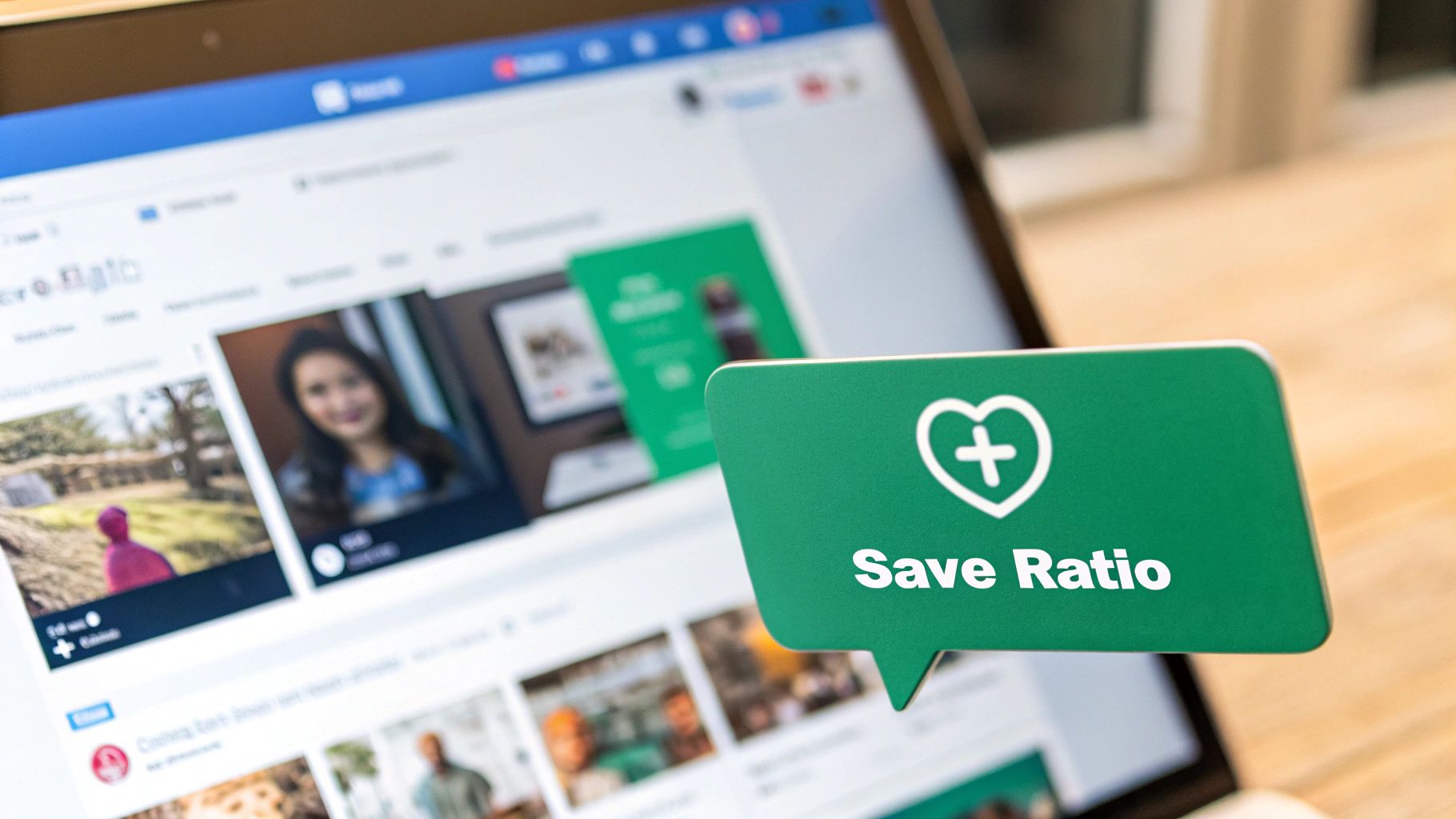
Recent algorithm updates have placed a higher emphasis on saves as a key signal of content quality. A strong Saves-to-Impressions Ratio, typically ranging from 0.5-2% as an industry average, can significantly differentiate good content from exceptional content. This metric is readily visible within your Instagram Insights under the Saved metric, allowing you to easily track and analyze its performance. It often correlates with long-term content performance, indicating which posts continue to deliver value beyond their initial exposure.
Features and Benefits:
Higher importance in recent algorithm updates: Instagram prioritizes saved content, making this metric a strong predictor of algorithm favorability.
Industry average ranges from 0.5-2%: Provides a benchmark for evaluating your performance and identifying areas for improvement.
Strong differentiator between good and exceptional content: Helps pinpoint your most valuable content and understand what resonates with your audience.
Visible in Instagram Insights under the Saved metric: Easy to track and monitor progress over time.
Often correlates with long-term content performance: Indicates content with lasting value and potential for continued engagement.
Pros:
Indicates content with lasting value beyond initial viewing: Saves demonstrate a user's intent to return to your content, signaling its long-term relevance.
Less likely to be artificially inflated than likes: Provides a more authentic measure of audience engagement and content quality.
Helps identify content worth repurposing or promoting: High-save content is prime for repurposing across different platforms or using in paid advertising campaigns.
Strong predictor of algorithm favorability: Boosts organic reach and visibility.
Shows genuine user intent to re-engage with content: Offers valuable insights into audience preferences and interests.
Cons:
Often overlooked in favor of more traditional metrics: Requires a shift in focus towards long-term value over immediate gratification.
Lower volume metric (harder to achieve statistical significance): Requires larger impression volumes for meaningful analysis.
May skew toward certain content types (tutorials, resources, lists): Not all content types are equally conducive to saving, which can influence the metric's interpretation.
Not historically tracked by many analytics platforms: Data may be limited for historical analysis.
Examples of Successful Implementation:
Financial educator @personalfinanceclub averages a 5 %+ savings ratio with actionable infographics.
Recipe account @halfbakedharvest achieves 3 %+ saves through detailed recipe cards.
Travel photographer @chrisburkard sees 4%+ save rates on distinctive landscape images.
Tips for Increasing Your Saves-to-Impressions Ratio:
Create valuable reference content users will want to revisit: Focus on providing information, resources, or inspiration that users will find useful over time.
Use carousel posts to increase save rates: Swipeable galleries offer more value and encourage users to save for later reference.
Include clear CTAs encouraging saves when appropriate: Prompt users to save your content for future use.
Design content that solves problems or provides ongoing inspiration: Content that addresses a specific need or provides ongoing value is more likely to be saved.
Analyze your highest-saved content to identify patterns: Understand what resonates with your audience and replicate successful strategies.
Focus on quality over quantity in content creation: Prioritize creating high-value content that provides genuine value to your audience.
Include text overlays summarizing key takeaways: Make it easy for users to quickly grasp the main points of your content.
Popularized By:
Instagram marketing strategist Jenn Herman
Content creator Alex Tooby
Instagram's internal algorithm engineering team
By focusing on the Saves-to-Impressions Ratio, influencers, businesses, and content creators can gain a deeper understanding of what truly resonates with their audience. This metric provides valuable insights into content performance, algorithm favorability, and long-term growth potential, making it a crucial addition to any Instagram performance analysis strategy.
6. Profile Visits and Click-Through Rate
Driving traffic off-platform is a key goal for many Instagram users, whether to an e-commerce store, a blog, or other online content. Understanding and optimizing your Profile Visits and Click-Through Rate (CTR) are crucial Instagram performance metrics for achieving this. These metrics offer valuable insights into how effectively your content captures audience attention and converts that interest into tangible actions within the Instagram marketing funnel.
Profile Visits measure how many users navigate to your Instagram profile after encountering your content. This could be from your feed posts, stories, reels, or even ads. A high number of profile visits suggests your content is intriguing enough to prompt further investigation. Click-Through Rate (CTR), on the other hand, focuses specifically on the percentage of profile visitors who click the link in your bio. This metric reveals how effectively you're converting profile views into traffic to your desired destination.
Features and Benefits:
Instagram Insights Integration: Profile visits are readily available within Instagram Insights, both per post and as an overall profile metric. Link clicks for your bio and story links (if applicable) are also tracked.
Benchmarking Data: Average profile visit rates typically fall between 1-5% of total impressions, while bio link CTRs usually range from 0.5-3% of profile visits. Tracking these metrics against industry benchmarks can help assess performance.
Timeframe Flexibility: Analyze these metrics across various timeframes – daily, weekly, or monthly – to understand trends and campaign impact.
Content Performance Analysis: By correlating profile visits and CTR with specific content pieces, you can pinpoint what resonates most with your audience and drives the highest engagement.
Pros:
Measures Deeper Engagement: Goes beyond passive likes and comments to indicate genuine interest in your brand or content.
Conversion-focused: Essential for campaigns aimed at driving traffic and achieving specific conversions.
ROI Measurement: Helps quantify the return on investment for your Instagram marketing efforts.
Content Effectiveness: Demonstrates how well your content encourages further exploration and action.
Traffic Source Validation: Crucial for businesses leveraging Instagram as a primary traffic source.
Cons:
Limited Link Options: Organic Instagram posts offer limited linking capabilities, primarily relying on the single bio link.
Content Dependent: Fluctuations in these metrics are common depending on the type and quality of content posted.
Bio and Link Optimization: Success hinges on a compelling bio and a clear, valuable link offering.
Limited Brand Impact Scope: May not fully reflect the overall brand impact of your Instagram identity.
Platform Engagement Emphasis: Instagram's algorithm prioritizes in-platform engagement, which can sometimes detract from off-platform traffic generation.
Examples of Successful Implementation:
E-commerce Success: Fashion retailer ASOS regularly achieves profile visit rates exceeding 5% on product showcase posts by incorporating clear calls to action and high-quality visuals.
Content Creator Strategy: Podcast host Jay Shetty converts over 2% of profile visitors to website clicks by using compelling episode teasers in his bio and captions, directing followers to listen to the full episode.
Optimized Landing Pages: Food blogger @pinchofyum doubled her CTR by creating a custom link landing page specifically designed for Instagram traffic, offering a seamless user experience.
Actionable Tips for Improvement:
Compelling Calls to Action: Use strong CTAs in captions to encourage users to visit your profile for more information or exclusive offers.
Regular Bio Link Updates: Keep your bio link fresh and relevant to your latest content or promotions.
Link-in-Bio Tools: Consider leveraging link-in-bio tools like Linktree or Later's Link in Bio to offer multiple destinations and improve user experience.
Landing Page Optimization: Test different link page designs and content to identify what drives the highest CTR.
Content that Sparks Curiosity: Create content that naturally prompts further discovery and encourages users to learn more.
Exclusive Content/Offers: Mention exclusive content or offers available through your bio link to incentivize clicks.
Content Type Analysis: Track which types of content drive the highest profile visit rates and tailor your strategy accordingly.
This combination of Profile Visits and CTR provides a powerful framework for evaluating and optimizing your Instagram strategy for driving traffic and achieving conversion goals. By understanding these metrics and implementing these actionable tips, you can effectively leverage Instagram to grow your audience and achieve your business objectives.
7. Hashtag Performance
Hashtag performance is a crucial Instagram performance metric that measures how effectively your hashtags contribute to content discovery and engagement. It isn't a single, quantifiable number, but rather an analysis of the impressions, reach, and engagement generated specifically through hashtag searches. Understanding and optimizing your hashtag performance is paramount for organic growth on Instagram, making it a critical metric for influencers, small businesses, brands, content creators, and marketing professionals alike. This metric deserves its place on this list because it directly impacts your ability to expand your audience beyond your existing followers and tap into new segments of Instagram users.
How it Works:
When you add hashtags to your posts, they become discoverable in searches related to those hashtags. Instagram's algorithm then uses this information to display your content to users who are interested in those topics, even if they don't already follow you. Analyzing hashtag performance provides insights into which hashtags are effectively driving discovery, allowing you to refine your strategy for maximum impact. You can view this data within your Instagram Insights under the 'Reached From' section, specifically looking at the 'Hashtags' category. This section allows you to track performance by hashtag group or individual tags.
Features and Benefits:
Viewable in Instagram Insights: Access detailed data on hashtag performance directly within the native Instagram app.
Track by Hashtag Group or Individual Tags: Analyze the performance of specific hashtags or curated groups to identify top performers.
Identify Top Performing Hashtags: Pinpoint which hashtags are driving the most impressions, reach, and engagement.
Optimize Hashtag Quantity and Mix: Determine the optimal number of hashtags and the ideal mix of small (<100K posts), medium (100 K- 1 M posts), and large (>1M posts) hashtags.
Measure Non-Follower Reach: Understand the percentage of your reach that is attributable to hashtag discovery, showcasing the impact on audience growth.
Pros:
Expand Audience Reach: Reach potential followers beyond your existing network.
Optimize Content Discoverability: Increase the visibility of your posts in relevant searches.
Boost Reach Significantly: With a well-executed strategy, hashtags can dramatically improve content reach.
Enhance Content Categorization: Group and categorize content effectively for easier searchability.
Identify Trending Topics: Discover popular and relevant topics within your niche.
Cons:
Variable Results: Performance can fluctuate significantly between posts depending on various factors.
Fluctuating Hashtag Popularity: The effectiveness of a hashtag can change as its popularity rises or falls.
Difficult to Isolate Individual Hashtag Performance: While possible to analyze groups, isolating the impact of a single hashtag can be challenging.
Potential for Spam: Overusing or using irrelevant hashtags can appear spammy and deter engagement.
Algorithm Dependence: Changes to Instagram's algorithm can impact hashtag effectiveness.
Examples of Successful Implementation:
GymShark: This fitness brand leverages targeted hashtag groups to reach over 30% of its audience through hashtag discovery.
@ChrisBurkard (Travel Photographer): Attributes over 40% of his content discovery to strategically chosen location-based hashtags.
@TheHomeEdit (Organization Business): Grew to over 5.3 million followers, partially through a consistent and effective organization-focused hashtag strategy.
Actionable Tips:
Categorize Hashtags: Create sets of hashtags for different content categories to ensure relevance.
Mix Hashtag Sizes: Use a balanced mix of small, medium, and large hashtags to maximize reach and target different audience segments.
Research Competitors: Analyze competitor hashtag strategies for inspiration and insights.
Use Hashtag Research Tools: Leverage tools like Flick and Later to identify relevant and trending hashtags.
Analyze Hashtag Combinations: Experiment with different hashtag combinations to find what drives the most reach for your content.
Avoid Banned/Flagged Hashtags: Stay updated on banned or flagged hashtags that can negatively impact visibility.
Update Strategy Regularly: Refresh your hashtag strategy quarterly to adapt to changing trends.
Consider a Branded Hashtag: Create a unique branded hashtag to curate user-generated content (UGC).
Popularized By:
Alex Tooby (Instagram Marketing Expert)
Flick (Hashtag Research Tool)
Later (Hashtag Research Tool)
Sue B. Zimmerman (Marketing Strategist)
By understanding and actively managing your hashtag performance, you can significantly increase your reach, discover new audiences, and maximize your organic growth on Instagram.
8. Reels Performance Metrics
Reel's performance metrics are essential Instagram performance metrics for anyone seeking to grow their identity on the platform. They provide crucial insights into how your short-form video content is performing on Instagram Reels, offering a window into audience engagement and reach. Understanding these metrics is key to optimizing your Reels strategy and maximizing your overall Instagram success. As Instagram prioritizes Reels to compete with TikTok, tracking these metrics has become non-negotiable for boosting visibility and achieving organic growth.
What are Reels Performance Metrics and How Do They Work?
Reels' performance metrics collectively measure the success of your Reels. Accessed through Instagram Insights, these analytics go beyond standard metrics like likes and comments. They track unique views (the number of individual accounts that have seen your Reel), plays (the total number of times your Reel has been played, including replays), shares, saves, and, importantly, the Reels-specific engagement rate. This rate considers all interactions with your Reel and provides a more comprehensive view of its performance compared to simply looking at likes. Instagram Insights also provides data on reach, comparing how your Reels perform against other content types you post, as well as identifying which audio tracks are driving the most engagement. Finally, you gain access to crucial metrics like retention rate (how long viewers watch your Reel) and average watch time.
Features and Benefits:
Reels-specific analytics in Instagram Insights: Offers granular data on Reel performance.
Comprehensive tracking: Measures plays, shares, comments, likes, and saves.
Reach comparison: Shows how Reels perform against other content formats.
Audio performance identification: Helps understand which audio tracks resonate with your audience.
Retention and average watch time: Provides insights into viewer behavior and content effectiveness.
Pros:
Algorithmic preference: Reels often receive preferential treatment in the Instagram algorithm, increasing visibility.
Expanded reach: Potential to reach a significantly larger audience beyond your existing followers.
Enhanced discoverability: Drives overall account discovery more effectively than static image posts.
Viral potential: Offers opportunities for rapid, viral growth.
Trend participation: Enables leveraging trending audio and challenges to boost engagement.
Cons:
Performance variability: Reels' performance can be unpredictable due to the algorithm's dynamic nature.
Content approach: Requires a different content creation approach than standard feed posts.
Time investment: Creating high-quality Reels can be more time-intensive than other content formats.
Video skills: Requires some level of video editing and production skills.
Shorter lifespan: Reels can have a shorter lifespan in terms of visibility compared to evergreen feed posts.
Examples of Successful Implementation:
Makeup artist @mikaylanogueira leveraged Reels to grow her following from zero to over 13 million, demonstrating the platform's immense growth potential.
Food account @tifffood reaches ten times more non-followers with Reels compared to static posts, showcasing the enhanced reach offered by the format.
Duolingo, a language-learning app, increased engagement by over 400% by implementing a personality-driven Reels strategy, demonstrating the power of creative and engaging content.
Actionable Tips:
Hook viewers quickly: Focus on capturing attention within the first 3 seconds.
Leverage trending audio: Use relevant trending sounds to increase visibility.
Optimize length: Keep most Reels under 15 seconds for higher completion rates.
Add text overlays: Cater to viewers watching without sound.
Post strategically: Share Reels when your target audience is most active.
Analyze performance: Track which hooks and formats perform best.
Create original audio: Establish your trends and increase brand recognition.
Use the remix feature: Engage with popular content and expand your reach.
Maintain consistency: Post Reels regularly to keep your audience engaged.
Why Reels Performance Metrics Deserve a Spot on This List:
In the current social media landscape, Reels are crucial for Instagram growth. These metrics offer invaluable insights into audience engagement, content performance, and overall account visibility. By understanding and leveraging these metrics, creators and businesses can optimize their Reels strategy and maximize their reach and impact on Instagram.
Popularized By:
The rise of Reels performance metrics has been fueled by several factors, including the influx of TikTok creators transitioning to Instagram, the platform's official promotion of Reels by head Adam Mosseri, the success of Reels-focused creators like @khaby.lame and @charlidamelio, and Instagram's algorithm prioritizing Reels distribution.
Instagram Performance Metrics Comparison
1. Engagement Rate
Implementation: Moderate (track likes, comments, shares)
Resources Needed: Follower & engagement data
Value: Best indicator of content resonance and influencer potential
Best For: Evaluating post-performance and partnership opportunities
Key Benefit: Combines multiple interaction types for a holistic view
Tip: Aim for 3-5%+ rate as a healthy benchmark
2. Reach
Implementation: Easy (via Instagram Insights)
Resources: Basic analytics access
Value: Shows true audience size and discovery potential
Best For: Brand awareness campaigns
Key Benefit: Measures unique viewers (not just followers)
Tip: Compare reach vs. followers to gauge content virality
3. Follower Growth Rate
Implementation: Moderate (track over time)
Resources: Follower count history
Value: Reveals long-term account health
Best For: Setting growth benchmarks
Key Benefit: Identifies what content drives followers
Tip: Healthy growth = 1-3% weekly increase
4. Story Completion Rate
Implementation: Moderate (track frame-by-frame)
Resources: Story analytics
Value: Measures viewer retention
Best For: Optimizing Story length/narrative
Key Benefit: Shows exact drop-off points
Tip: 70 %+ completion rate is strong
5. Saves-to-Impressions Ratio
Implementation: Moderate (track both metrics)
Resources: Post insights
Value: Indicates lasting content value
Best For: Evergreen content strategy
Key Benefit: Algorithm favorite metric
Tip: 1 save per 100 impressions = good
6. Profile Visits & CTR
Implementation: Moderate (link tracking)
Resources: Bio link tools
Value: Measures conversion potential
Best For: Driving website traffic
Key Benefit: Shows serious interest
Tip: 3-5% profile visit rate is strong
7. Hashtag Performance
Implementation: Moderate (analytics tools)
Resources: Hashtag research
Value: Expands discoverability
Best For: Niche audience growth
Key Benefit: Reveals trending tags
Tip: Use 3-5 niche-specific hashtags
8. Reels Performance
Implementation: High (video production)
Resources: Editing tools/analytics
Value: Drives viral growth
Best For: Algorithm favorability
Key Benefit: Massive non-follower reach
Tip: Focus on the first 3-second hook
Scale Up Your Instagram Game with Gainsty and Strategic Metrics
Mastering your Instagram performance metrics is no longer a luxury—it's a necessity for success in 2025. From engagement rate and reach to follower growth and story completion rates, understanding these key indicators provides a roadmap for optimizing your content and strategy. By analyzing metrics like saves-to-impressions ratio, profile visits, click-through rates, hashtag performance, and Reels performance metrics, you can identify what resonates with your audience and adjust your approach accordingly. These insights empower you to create more engaging content, attract a wider audience, and ultimately achieve your Instagram goals. If you're looking to expand your understanding of broader social media measurement, we recommend this comprehensive guide: 15 Essential Social Media Performance Metrics Every Marketer Must Track from SuperX. It provides a deeper dive into social media metrics and how to use them effectively across different platforms.
The most important takeaway here is that data-driven decision-making is the key to unlocking sustainable growth on Instagram. By actively monitoring and analyzing these Instagram performance metrics, you'll gain valuable insights into your audience’s behavior, preferences, and how they interact with your content. This knowledge empowers you to refine your strategy, boost your organic reach, and cultivate a thriving community.
Don't just post and hope for the best. Take control of your Instagram destiny. Ready to upgrade your Instagram strategy and gain a competitive edge? Gainsty helps you analyze these critical Instagram performance metrics, providing actionable insights and AI-powered strategies for maximizing your organic growth. Visit Gainsty today and unlock the power of data-driven Instagram success.

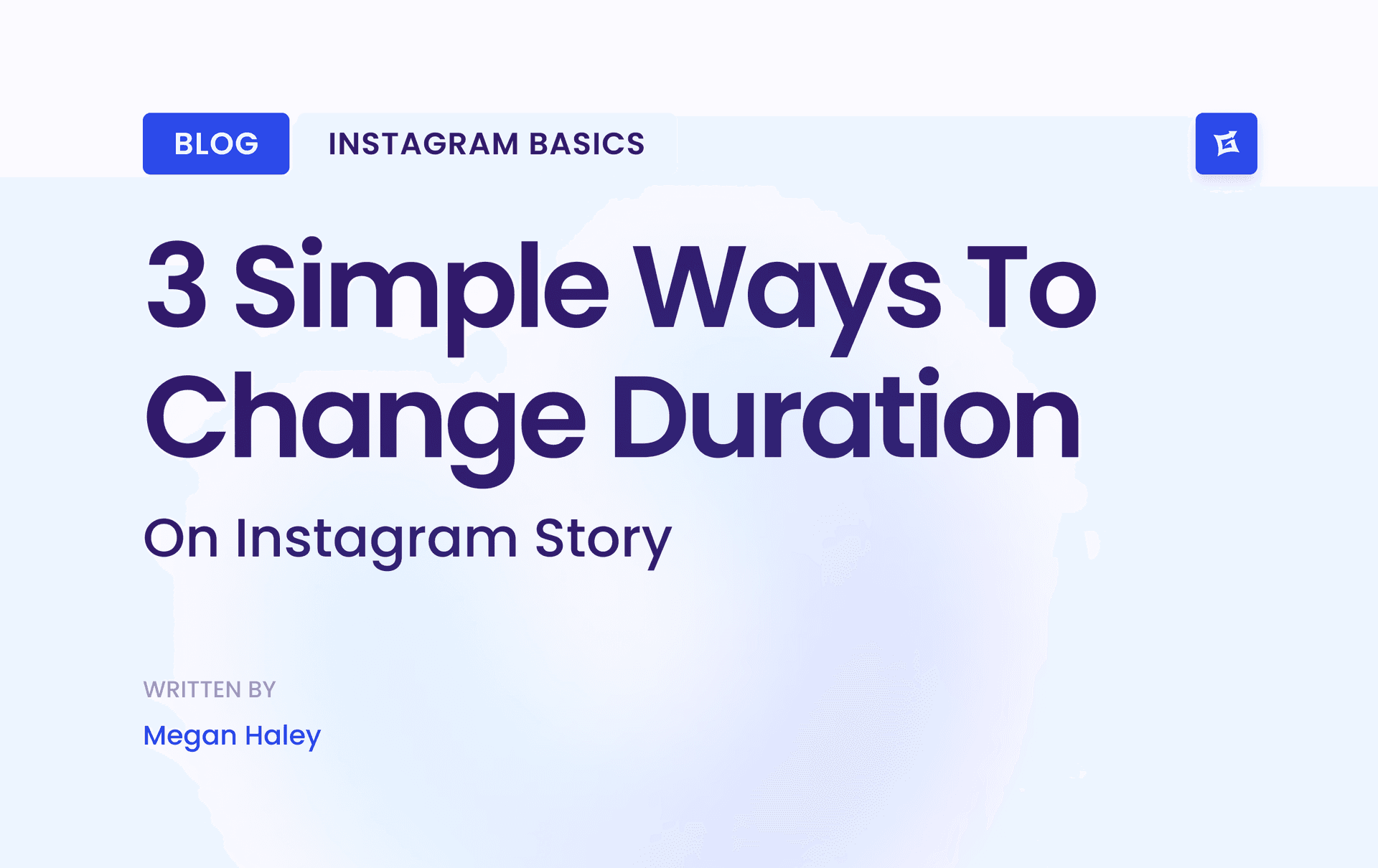
.png&w=1920&q=75&dpl=dpl_9XSWKBjhcBN6v6b1SN7m3p1WWjfr)
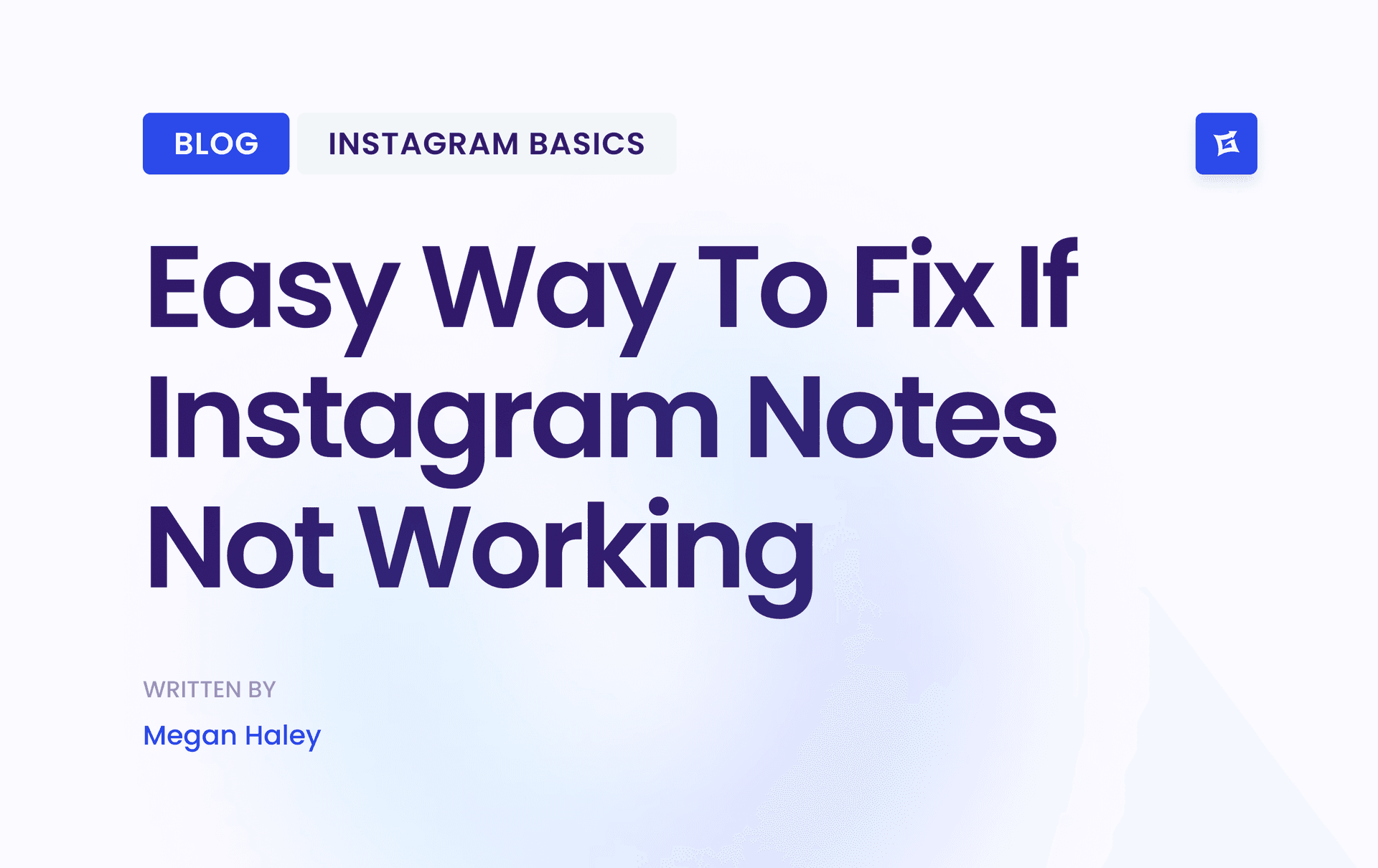
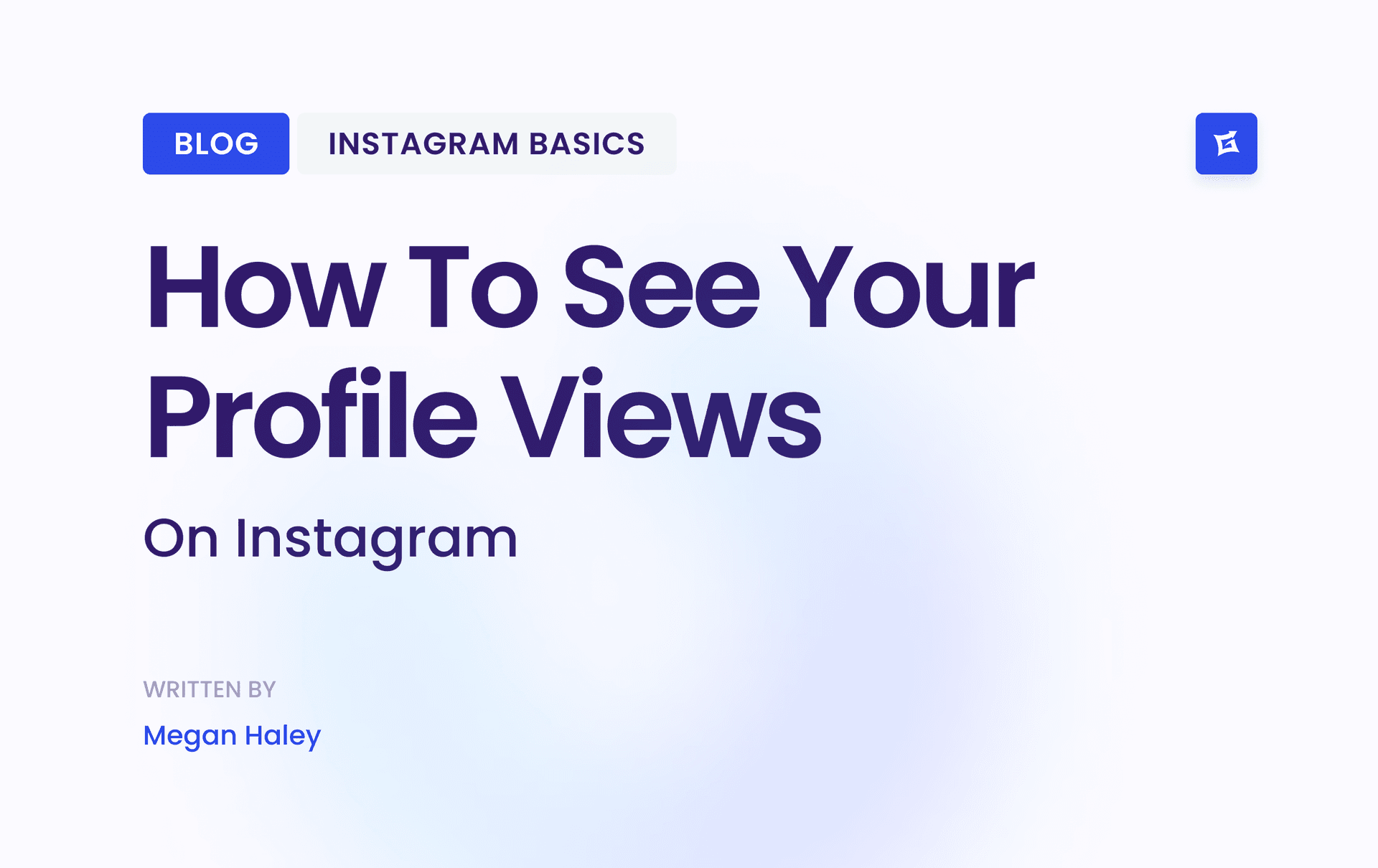
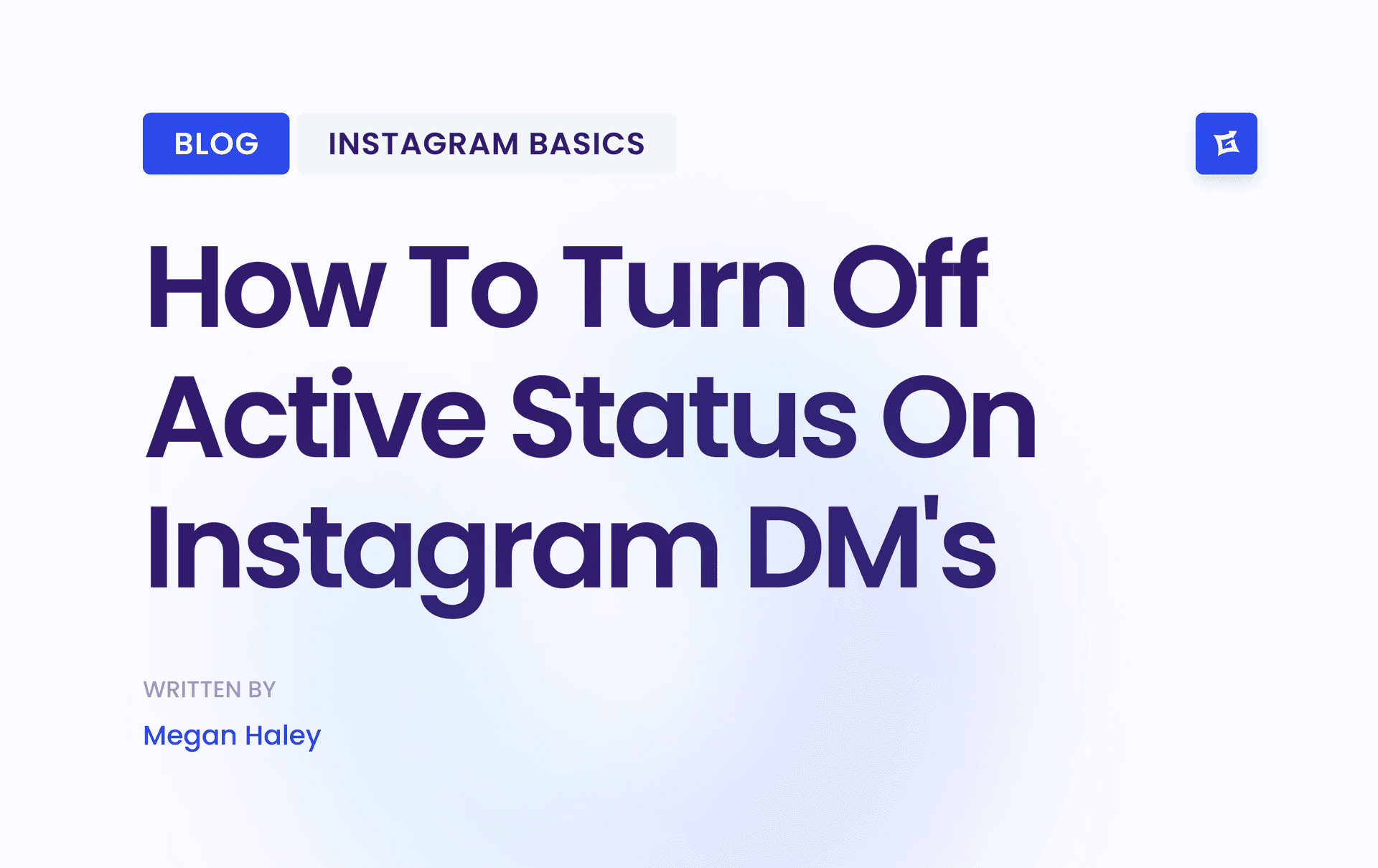
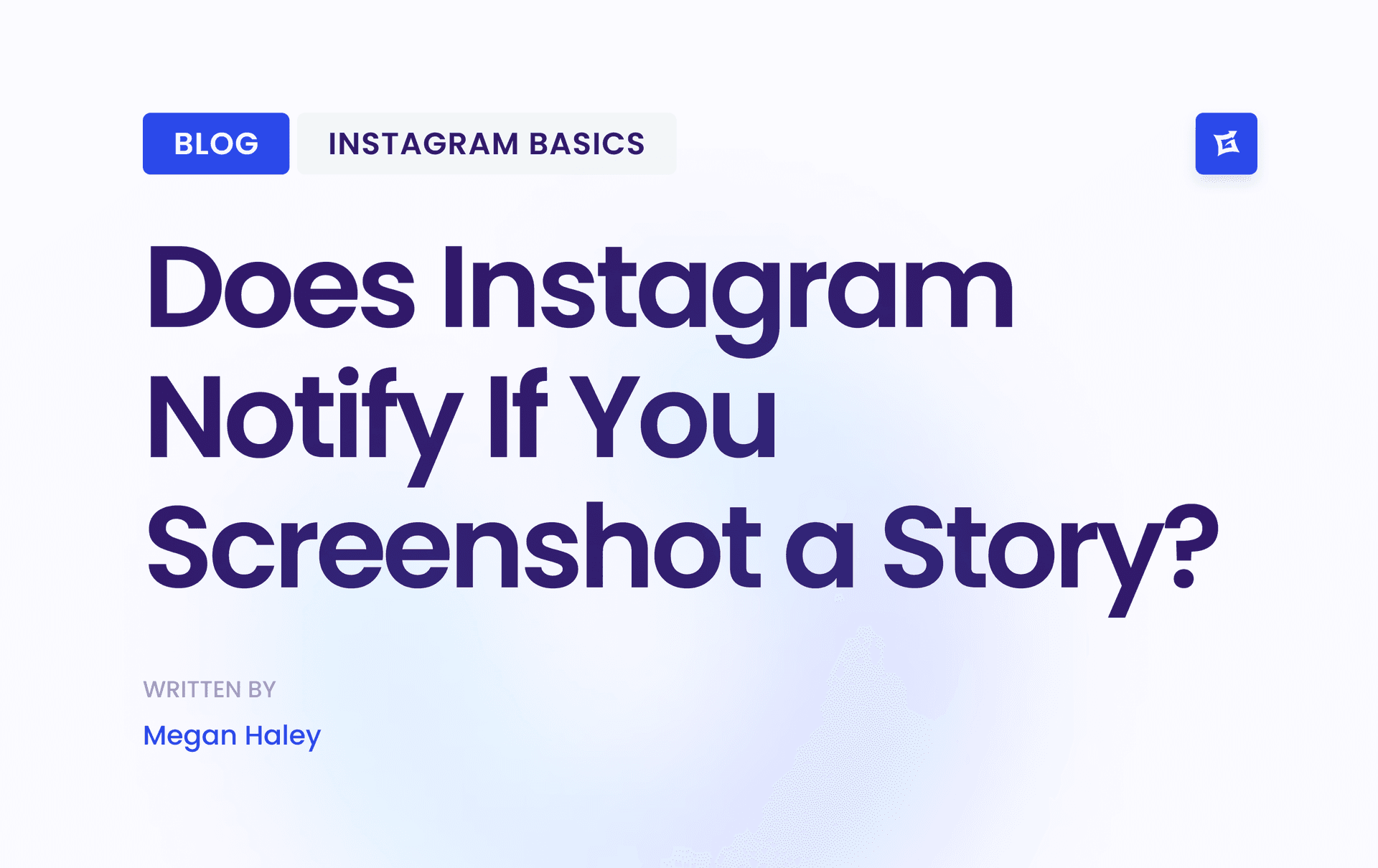



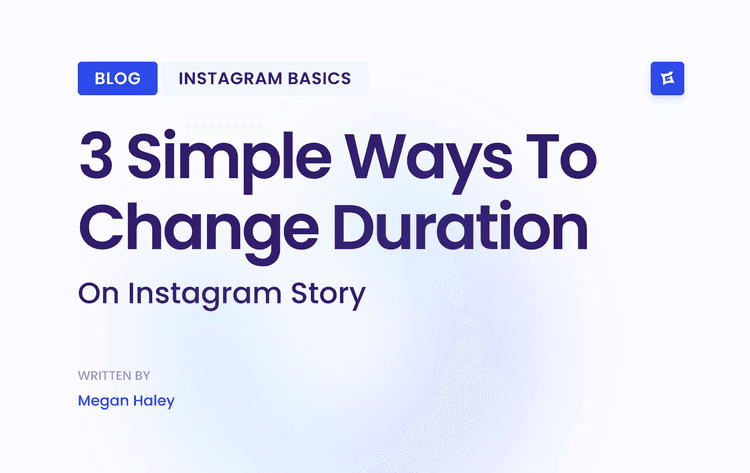
.png&w=750&q=75&dpl=dpl_9XSWKBjhcBN6v6b1SN7m3p1WWjfr)
